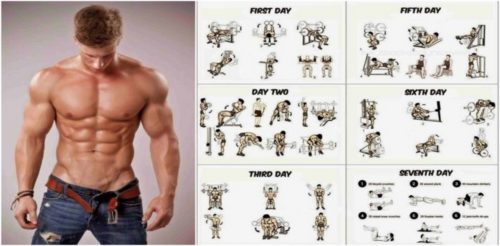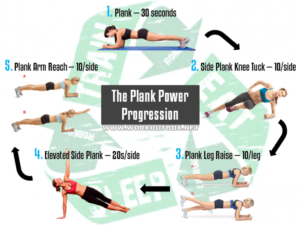Muscle growth is a physiological response to the need to lift heavier loads on a regular basis. We induce these heavier loads by increasing the resistance that our muscles need to lift over an extended period of time. The increase in load stimulates muscle growth. This is where weight training programs come into play. To grow, muscles need to be fed with more nutrients and given rest time to allow for growth to occur. In this article, we will focus on the principles of planning a good weight training program for building muscles.
There are five main principles to consider when planning a good program:
1. Types of Weight Training Exercises
There are two main types of weight training exercises, and they are compound exercises and isolation exercises. The former are exercises that use multiple muscle groups. These exercises include squats, dead lifts, bench press, dips, military press, and pull-ups, among others. Isolation exercise refers to an exercise that only uses one main muscle group when performed.
Examples of these include biceps curls, lateral raises, and triceps extensions. For gaining muscle fast, compound exercises are preferred because you want to gain mass in all areas quickly. Compound exercises will be ideal for this because they will allow you to stimulate the most muscle fiber possible.
2. Intensity and Progression of Exercise
As mentioned in the beginning, growth of muscle will only take place with high intensity weight training. But this increase intensity whether through greater resistance per lift or more lifts per exercises must be increased progressively. Imagine asking a beginning high school kid to perform a 300 pound squat right from the start.
It’s not going to happen and we’ll be asking for trouble. Injury will happen because the body of this person is simply not capable of that yet. The increased intensity must be progressive. This has implication in planning your weight lifting program. Your program must raise resistance level gradually so that adaptations can occur without serious safety issues. When the intensity of your weight-training program increases gradually, your muscles will adapt and grow gradually as well. This will achieve your aim of building a bigger body mass.
3. Sets and Repetitions (reps)
Sets and reps are invariably tied to intensity of exercise. You can increase or decrease your training intensity by adjusting the number of sets and reps performed in any exercise. These sets and reps can also be increased over time according to your training plan to reap the benefits of muscle growth. When planning the number of sets and reps for your weight training program, do bear in mind the following guidelines…
For strength and muscle mass growth, it is advisable to perform more sets with lower repetitions ranging from 2-12. Greatest strength and muscle growth takes place when large numbers of muscle fibers are stimulated. You can only stimulate these massive contractions with high resistance load. For endurance training, each set of the exercise should consist of 15 repetitions and beyond, but the load should be between 50-75% of your one rep maximum. This form of training will allow the muscles to work longer, thus improving the aerobic and anaerobic capacity of the muscles. But don’t expect your muscles to grow very large using this rep range.
When you plan your program, do ask yourself what are the objectives of your weight training program are so that you can be specific in the number sets and reps you plan in your program.
4. Resting
Like infants and babies, our bodies grow when they are at rest. That is why babies need so much sleep and also grow so fast. It is the same with body building and gaining mass. After muscular stimulation and eating properly for growth, you need to allow for good quality rest and recovery to take place.
When we sleep, the systems go into hyper drive to channel resources and nutrients to affected areas. Multiplication of new cells and repair of tissues occur at a faster pace because the body systems do not need to worry about other demands that will be present when we are awake and active.
It is also during good quality sleep that the most powerful hormones that are responsible for growth are secreted at larger amount to stimulate the growth that is required. In general, it is important to have at least 8 hours of uninterrupted sleep a night. It would also be good to supplement this with a short siesta of 1-2 hours in the afternoon when the body system is biologically at sleep. But this extra is not as crucial since most of us do have to work.
5. Training Frequency
This is planned and done in relation to the rest element. We cannot be training non stop everyday if we need to allow our muscles to rest and growth. Remember that our muscles only grow when resting. Typically, muscles and tissues need about 36 to 48 hours to fully recover from a previous bout of work out. By fully recover, we mean that all damaged tissues are repaired, and growth of muscle has started.
In terms of physical signs, after training, muscle aches and stiffness will be common. But after sufficient rest, these sensations should be much reduced if not completely gone. Once that has taken place, our muscles and tissues are ready for more stimulation. Because of the time frame needed for muscles to recover, there are some ways you can plan your training frequency. For those using compound exercises, training on alternate days is a possible plan.






Post your comment